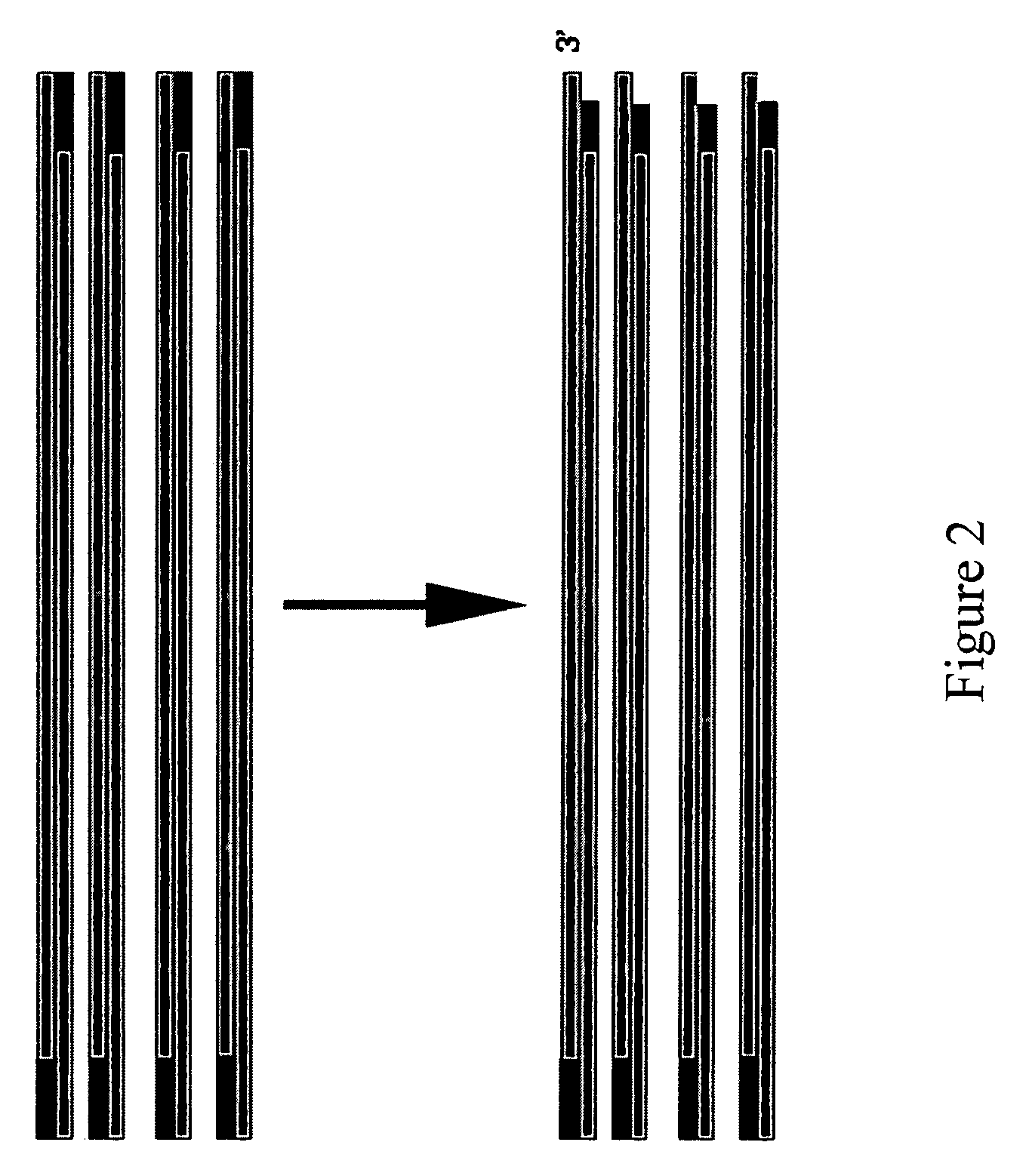Method for assembling PCR fragments of DNA
a technology of pcr fragments and dna, which is applied in the field of assembling pcr fragments of dna, can solve the problems of difficult assembly of specific ordered fragments much larger, limited size of current methods of manipulating dna fragments, and inability to define the orientation of the resulting fragment. to achieve the effect of facilitating the steps
- Summary
- Abstract
- Description
- Claims
- Application Information
AI Technical Summary
Benefits of technology
Problems solved by technology
Method used
Image
Examples
example 1
[0028] All PCRs were performed using Gene Amp® reagents (PERKIN-ELMER,™ Norwalk, Conn., USA) in 50 μL reaction mixtures with 2.5 U Taq DNA polymerase and 2.5 mM MgCl2 in a RoboCycler Temperature Cycler (STRATAGENE,™ La Jolla, Calif., U.S.A.). PCR primer sequences are shown in Table 1. Amplifications from pACYC184 (NEW ENGLAND BIOLABS,™ Beverly, Mass., U.S.A.) contained 50 ng of plasmid and 40 pmol of each PCR primer CAT3 and CAT5 or SacCAT3 and SacCAT5. Cycling was at 95° C. for 1 min. 55° C. for 1 min. 72° for 1 min for 30 cycles followed by 1 cycle at 72° C. for 3 min. Genomic amplifications from E. coli strain W3110 contained 100 ng genomic DNA, 40 pmol of LacST#1 and #2, LacMD#1 and #2, LacEN#1 and #2 (See Table 1.) and were carried out at 95° C. for 45 s, 55° C. for 45 s, 72° C. for 45 s for 30 cycles, then a final extension at 72° C. for 3 min.
TABLE 1PCR Primer SequencesCAT3(5′ AGCUCGGCAC GTAAGAGGTT CCAACTTTCA CC 3′ [32 nucleotide])CAT5(5′ AGCUCCAGGC GTTTAAGGGC ACCAATAACT GC...
example 2
[0035] Our first example demonstrated the viability of the method as used in solution. However, the method was cumbersome, tedious, and not applicable for large scale up. Thus, we now demonstrate a solid phase procedure that is suitable for scale-up and commercial use.
[0036] This example was based on the use of a plasmid which, intact, confers resistance to the antibiotic ampicillin and has the lacZ gene which allows for metabolism of the substrate Xgal; an E. coli host with a lacZ-containing plasmid grows as a blue colony on Xgal plates instead of a white colony which the E. coli host produces.
[0037] The first step is to design oligonucleotides so that the PCR product A will have an overhang on the 3 end opposite of the biotin and will leave a sticky 3′ end after enzymatic treatment with UDG and T4 endonuclease V AND so that there is a biotin attached to the 5 end AND so that the PCR amplified product includes a loxP site near the end where biotin is attached. In our example, thi...
PUM
| Property | Measurement | Unit |
|---|---|---|
| Digital information | aaaaa | aaaaa |
| Digital information | aaaaa | aaaaa |
| Digital information | aaaaa | aaaaa |
Abstract
Description
Claims
Application Information
 Login to View More
Login to View More - R&D
- Intellectual Property
- Life Sciences
- Materials
- Tech Scout
- Unparalleled Data Quality
- Higher Quality Content
- 60% Fewer Hallucinations
Browse by: Latest US Patents, China's latest patents, Technical Efficacy Thesaurus, Application Domain, Technology Topic, Popular Technical Reports.
© 2025 PatSnap. All rights reserved.Legal|Privacy policy|Modern Slavery Act Transparency Statement|Sitemap|About US| Contact US: help@patsnap.com



